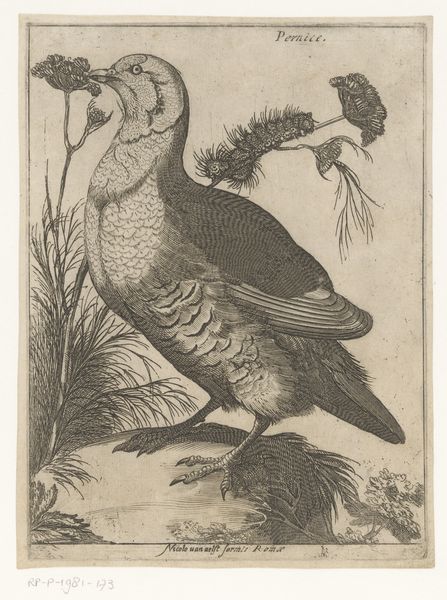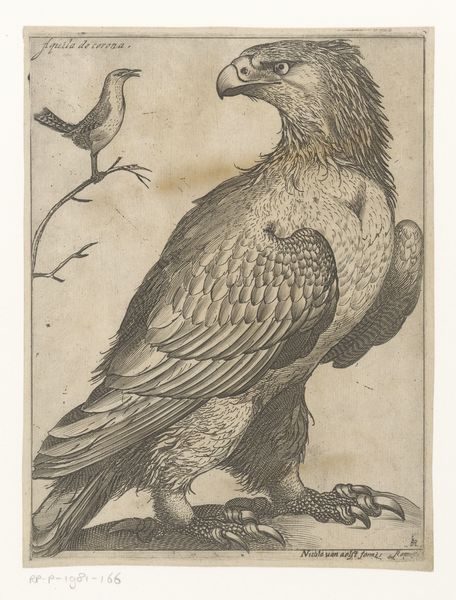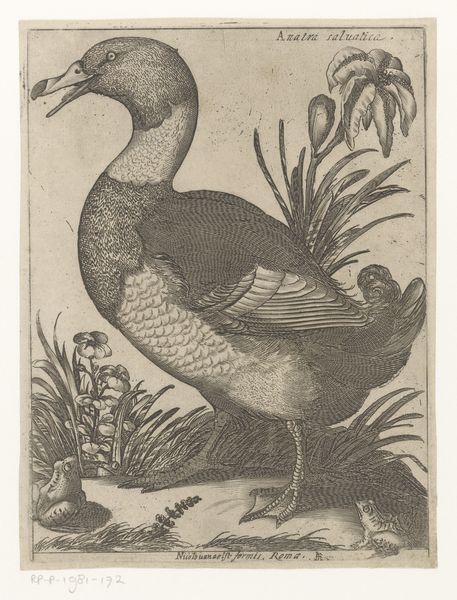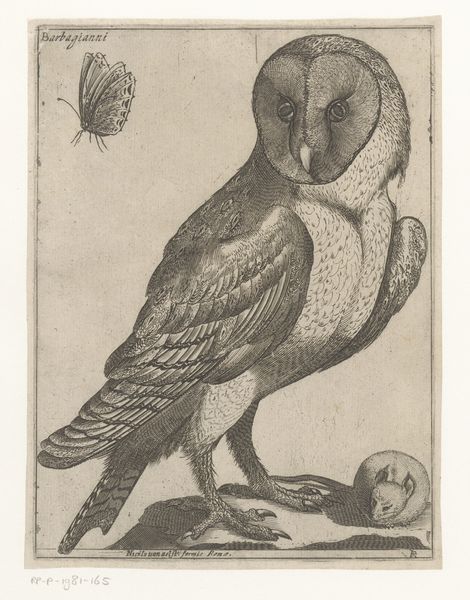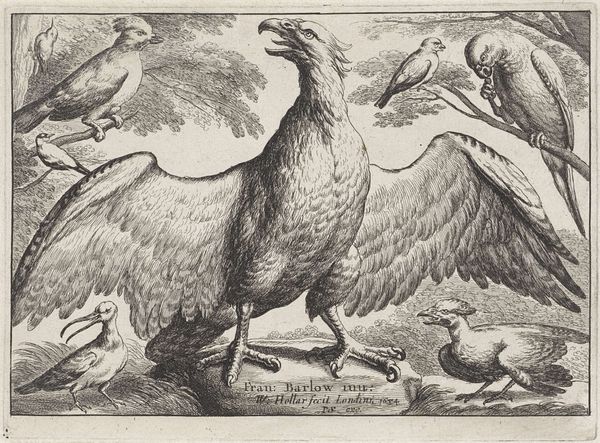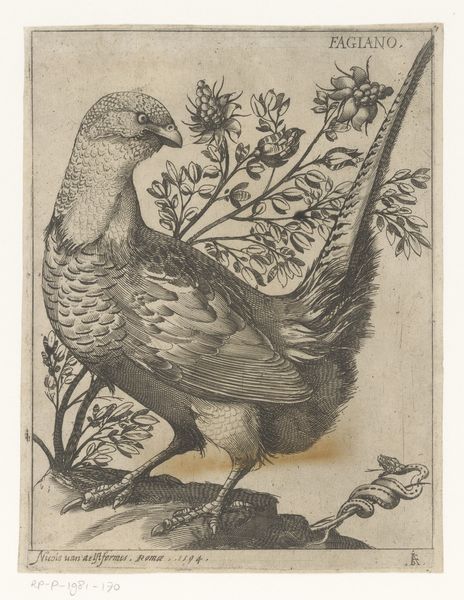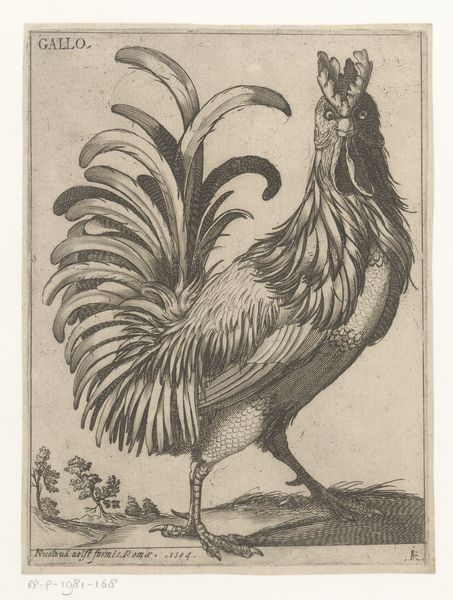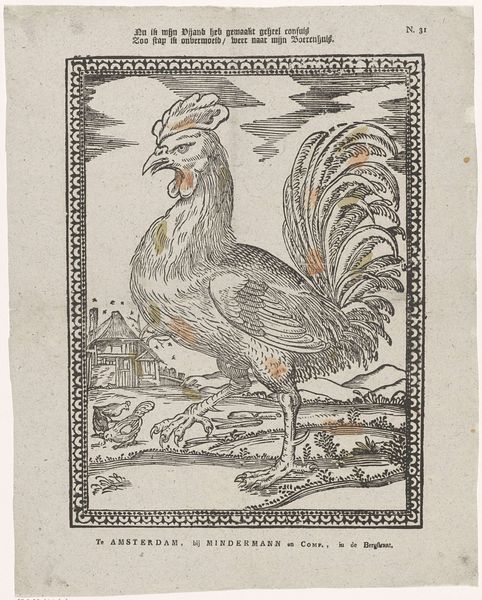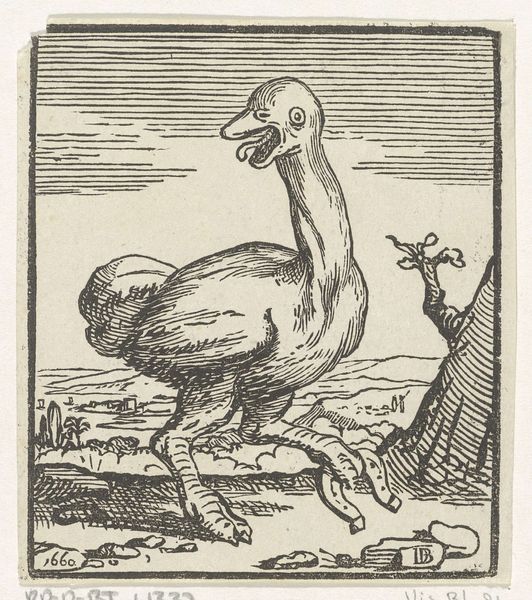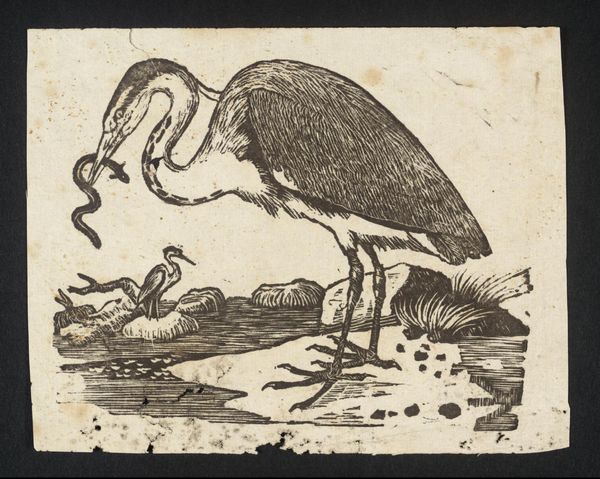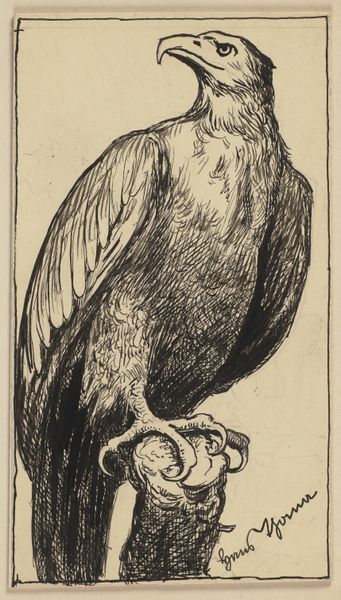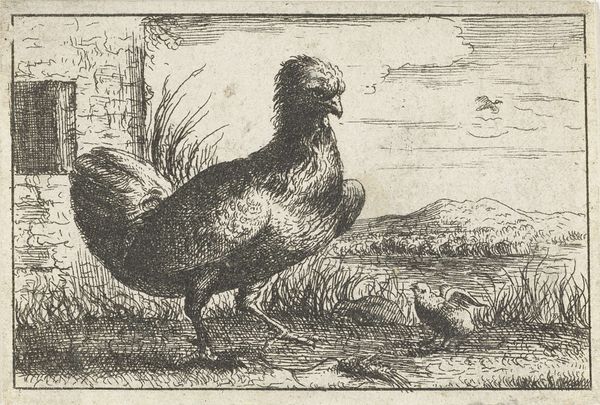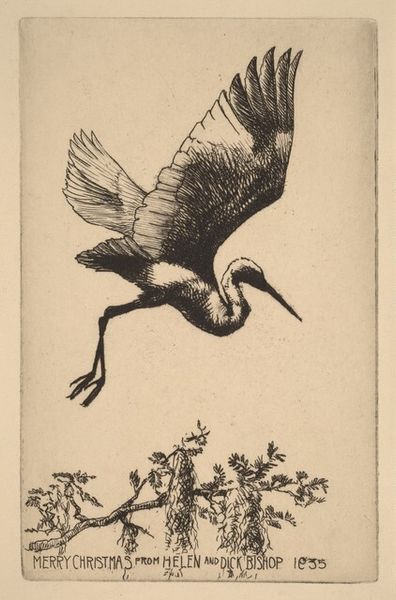
print, engraving
#
medieval
#
animal
# print
#
old engraving style
#
landscape
#
bird
#
figuration
#
line
#
engraving
#
realism
Dimensions: height 215 mm, width 160 mm
Copyright: Rijks Museum: Open Domain
Jacques de Fornazeris created this print titled "Watervogel," or "Water Bird," in Rome during the early 17th century. The image might strike us as simply a depiction of nature, but in its time, prints like these played a crucial role in shaping European understanding of the wider world. As Europe expanded its reach through trade and colonization, images of exotic flora and fauna became highly sought after. Artists often worked from secondhand descriptions or sketches, leading to imaginative, sometimes inaccurate, representations. The bird here seems to be a composite of different species, reflecting the limited knowledge and artistic license of the period. "Watervogel" also highlights the growing importance of scientific observation and documentation. Publications containing such prints contributed to the development of natural history as a discipline, influencing how Europeans perceived their place in the natural order. By studying these images alongside texts and travel accounts from the time, we can gain insights into the complex interplay between art, science, and society in the early modern world.
Comments
No comments
Be the first to comment and join the conversation on the ultimate creative platform.
